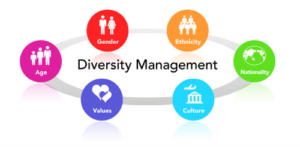Table of Contents
Diversity is a topic that is often discussed in the workplace, but what does it mean and how can leaders manage it? Diversity includes things like gender, race, ethnicity, sexual orientation, and age. When these differences are acknowledged and respected, it leads to a more inclusive environment in which everyone can feel comfortable and productive. Leaders who want to manage diversity effectively should be proactive in creating an environment where all employees feel valued and respected.
This involves understanding the different perspectives that people bring to the table and being open to new ways of thinking. By implementing some simple strategies, leaders can make their workplace more diverse and inclusive for all employees.
What should leaders do to successfully manage diversity in the workplace?
In any workplace, leaders need to manage diversity effectively. With the advent of mobility management software, it has become easier for leaders to connect with employees spread out across the globe. However, managing diversity in the workplace goes beyond simply using technology to stay connected.
Leaders need to be aware of the different perspectives and experiences their employees bring to the table. They need to create an inclusive environment that values and celebrates those differences. Diversity management can help leaders create a more productive and innovative workplace when done effectively.
What is diversity management?
Diversity management is a process through which organizations can better understand and embrace the diversity of their employees. Through diversity management, organizations can create an environment where employees feel valued and respected, and where they can best utilize their skills and abilities.
Diversity management also helps organizations identify and address any potential biases or discriminatory practices that may be present. By encouraging a more diverse workforce, organizations can not only improve their workplace culture but also improve their bottom line. In today’s increasingly global economy, businesses that can effectively manage diversity will be well-positioned to succeed.
What should leaders do to manage diversity better?
Diversity management is a key challenge for leaders. To better manage diversity, they should take a proactive approach that includes setting goals and objectives, designing policies and practices, and measuring progress. Additionally, leaders should create a culture of inclusion that values and respects all employees. Here are a few tips for leaders to follow.
- Leaders need to be aware of their own biases and how they may impact their decision-making
- Leaders should make an effort to learn about the backgrounds and cultures of their employees
- Leaders should create an environment where employees feel comfortable discussing sensitive topics such as race and religion
- Leaders should take steps to address any conflicts that may arise in a diverse workplace
- Leaders can promote diversity by hiring a more diverse workforce
Leaders need to be aware of their own biases and how they may impact their decision-making
As a leader, it’s important to be aware of your own biases and how they might impact your decision-making. We all have cultural backgrounds and experiences that shape our worldviews, and these can sometimes lead us to make judgments based on our perspectives rather than on objective facts.
This is why cultural competence is so important for leaders. By understanding and respecting the cultural differences of others, we can avoid making decisions that are influenced by our own biases. Instead, we can work to create a more inclusive environment where everyone is heard and respected. When we’re able to do this, we can make better decisions that benefit everyone involved.
Leaders should make an effort to learn about the backgrounds and cultures of their employees
In today’s workplaces, it’s more important than ever for leaders to make an effort to learn about the backgrounds and cultures of their employees. It’s essential that leaders are able to navigate different cultural values and norms. By learning about the backgrounds and cultures of their employees, leaders can create a more inclusive environment where everyone feels valued and respected.
Additionally, this understanding can help leaders to communicate and collaborate better with employees from different backgrounds. Ultimately, making an effort to learn about the backgrounds and cultures of employees is a key leadership skill in today’s world.
Also Read This: How to Become a Better Leader in Agile?
Leaders should create an environment where employees feel comfortable discussing sensitive topics
In today’s culturally diverse workplace, it is more important than ever for leaders to create an environment where employees feel comfortable discussing sensitive topics such as race and religion. By doing so, leaders can help to ensure that all employees feel respected and valued.
Additionally, open dialogue about these topics can help to identify potential areas of misunderstanding or conflict. Ultimately, by creating a safe space for employees to discuss sensitive issues, leaders can help to build a more cohesive and productive workplace.
Leaders should take steps to address any conflicts that may arise in a diverse workplace
Leaders in workplaces today must take into account the reality of a diverse workforce. With people from different backgrounds and cultures working together, conflicts will inevitably arise from time to time. However, these conflicts can be seen as an opportunity for growth and understanding.
By addressing these conflicts head-on, leaders can help to create a more cohesive and productive workplace. And while this may require some effort in the short term, it will pay dividends in the long run. By taking steps to address conflicts in a diverse workplace, leaders can create a more positive and productive work environment for all.
Leaders can promote diversity by hiring a more diverse workforce
Leaders play an important role in promoting diversity in the workplace. One way they can do this is by hiring a more diverse workforce. A diverse workforce brings with it a wealth of different perspectives and experiences. This can make organizations more adaptable and resilient, and better able to meet the needs of a diverse customer base.
In addition, a diverse workforce can help to create a culture of inclusion, where everyone feels valued and respected. Furthermore, research has shown that diverse teams are often more creative and innovative than homogenous teams. As such, hiring a more diverse workforce is one key way that leaders can promote diversity in the workplace.
Leaders need to manage diversity in the workplace by creating an inclusive environment where everyone feels comfortable sharing their ideas and experiences.
This can be done by establishing clear expectations, communicating effectively, and training employees on how to recognize and respond to unconscious bias. Leaders who make a concerted effort to create a diverse and inclusive work environment will see improved employee productivity and creativity.













